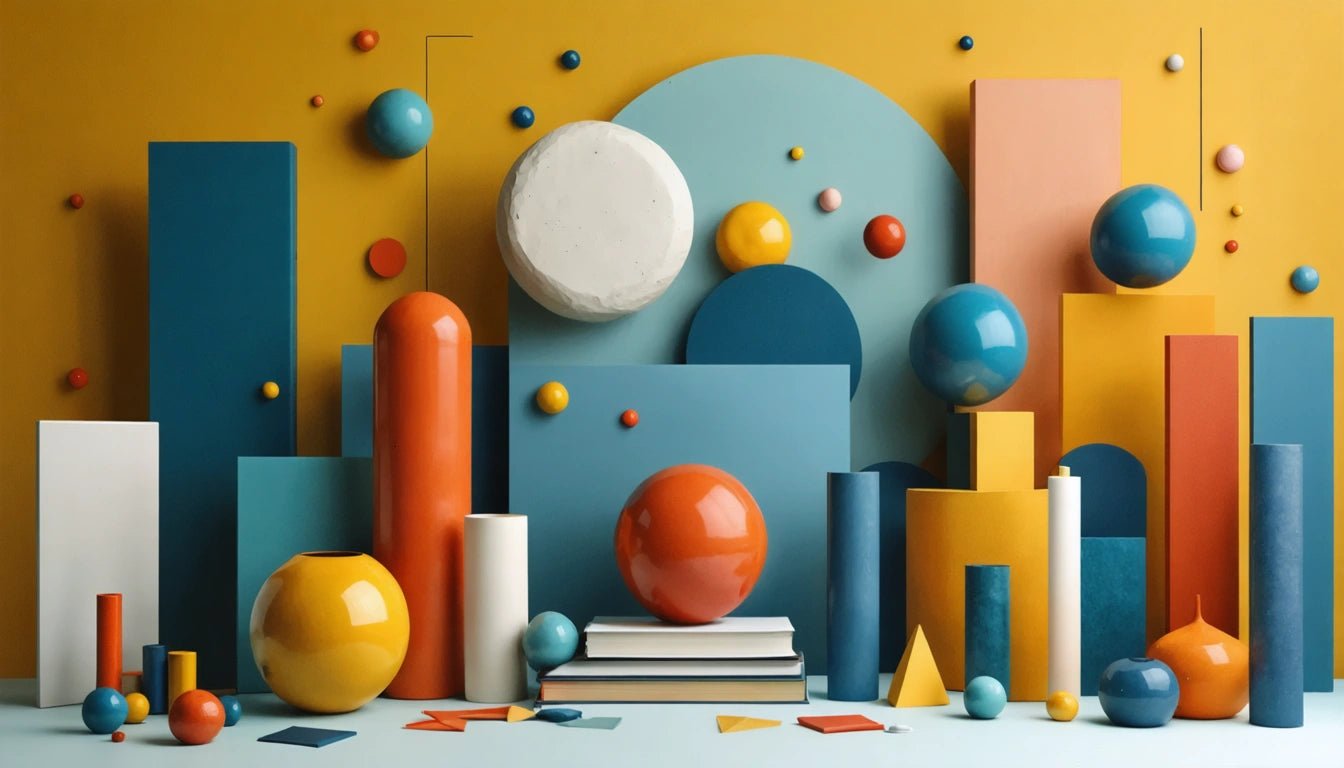Table of Contents
Understanding the Symbolic and Psychological Meanings of Shapes in Art
Shapes form the foundation of visual communication, carrying inherent meanings that transcend language barriers. Artists, designers, and marketers harness the symbolic meaning of shapes to evoke specific emotions and convey messages without words. This exploration delves into shapes and their meaning across cultural, psychological, and artistic contexts.
Fundamental Shapes and Their Meanings
Each basic geometric shape carries distinct symbolic associations that have evolved through human history:
Circles: Unity and Perfection
The circle represents wholeness, infinity, and protection. With no beginning or end, circles symbolize completeness and the eternal cycle of life. In product design, circular shapes often convey harmony and inclusivity.
Squares and Rectangles: Stability and Order
Square shapes communicate stability, reliability, and trust. The shape definition in art for squares includes attributes like balance and formality. Rectangular forms appear in architecture and design when conveying strength and dependability matters.
Triangles: Direction and Tension
Triangular shapes create dynamic energy and movement. Pointing upward, they suggest aspiration and growth; pointing downward, they may represent instability or descent. The triangle's three points can symbolize trinities in various belief systems.
According to research on logo design, these fundamental shapes often form the backbone of effective brand identities, with their inherent meanings influencing consumer perception.
Shapes Meaning in Psychology: How Forms Affect Emotion
The psychological impact of shapes is profound and often subconscious:
- Curved shapes typically evoke comfort, relaxation, and organic naturalness
- Angular shapes can trigger alertness, efficiency, and technological associations
- Symmetrical shapes provide a sense of balance and harmony
- Asymmetrical shapes create tension and visual interest
These psychological responses to shapes explain why certain products use specific forms to communicate their benefits. For instance, many companies producing relaxation products incorporate rounded shapes in their packaging design. Even in specialized markets, like the cannabis industry, where pre-rolled cone products utilize conical shapes that not only serve functional purposes but also convey a sense of crafted precision and natural flow in their design.
Cultural Context and Shape Symbolism
Shape symbols meaning can vary dramatically across cultures:
In Western traditions, the cross shape carries religious significance, while in Eastern philosophies, the mandala (circular, geometric pattern) represents cosmic harmony. The hexagram appears in Judaism as the Star of David, while Islamic art often features intricate geometric patterns avoiding figurative representation.
Understanding these cultural dimensions is essential when designing for global audiences. As noted in this guide on visual merchandising, shapes with definition and cultural relevance can dramatically impact consumer engagement across different markets.
Shapes in Design: Practical Applications
Designers apply shape meanings strategically across various fields:
Architecture
Buildings incorporate shapes to communicate their purpose and evoke specific reactions. Religious structures often feature spires (triangular) pointing upward, suggesting spiritual ascension, while government buildings frequently use rectangular forms to convey stability and authority.
Product Design
The contours of products influence user perception before any interaction occurs. Luxury items often feature more organic, flowing shapes, while utilitarian products may employ more angular, efficient forms.
Logo Design
Brand identities rely heavily on shape psychology. Financial institutions typically use square or rectangular shapes to suggest security and trustworthiness, while creative agencies might employ more dynamic, irregular forms to convey innovation.
The practical application of dimensions and proportions in these designs further enhances the impact of shape symbolism.
Shape Combinations and Complex Meanings
When shapes combine, their meanings interact and create more nuanced messages:
The golden ratio (approximately 1:1.618) appears throughout nature and classical design, creating proportions that humans find inherently pleasing. Fractals, with their infinitely repeating patterns at different scales, suggest the organized complexity of natural systems.
These sophisticated combinations of shapes create visual harmony that can be measured and replicated, as explained in this dimensional analysis guide.
Future of Shape Symbolism in Visual Communication
As visual communication continues to evolve in our increasingly digital world, the symbolic meaning of shapes adapts while maintaining core psychological impacts. Emerging trends include:
- Simplified, minimalist shapes that communicate efficiently in small digital spaces
- Responsive shapes that transform across different viewing contexts
- Animated shapes that leverage movement to enhance meaning
- Cross-cultural shape vocabularies that transcend regional interpretations
The future of shape symbolism will likely see greater personalization, with AI potentially analyzing individual responses to shapes and tailoring visual experiences accordingly. However, the fundamental meanings of shapes will continue to influence how we process visual information, making their study essential for effective communication.
Understanding shapes and their meaning remains critical for anyone working in visual fields, from fine artists to digital designers. By harnessing the inherent power of shape symbolism, creators can communicate more effectively across language barriers and cultural boundaries.



















